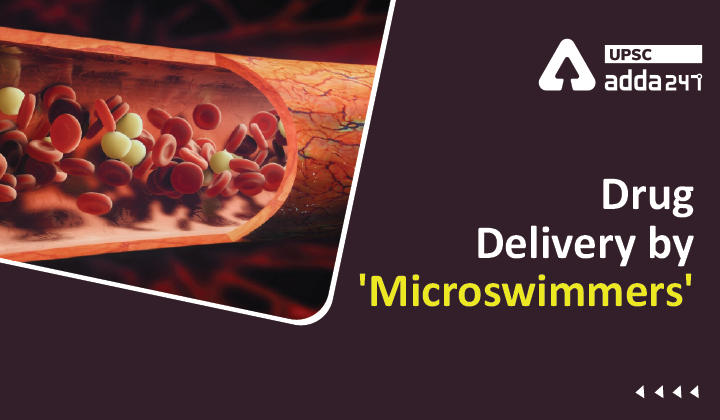Table of Contents
Microswimmers UPSC: Relevance
- GS 3: Science and Technology- developments and their applications and effects in everyday life.
Microswimmers: Context
- In a recently conducted study, it was shown that it is possible to use light as a fuel to move microbots in real-body conditions with intelligent drug-delivery that is selectively sensitive to cancer cells.
What is microswimmer?
- A microswimmer is a microscopic object (microbot) with the ability to move in a fluid environment.
- Natural microswimmers are found everywhere in the natural world as biological microorganisms, such as bacteria, archaea, microanimals
- “Bacterial swimming,” as it’s commonly known in the research community, has been studied intensively by scientists since the 1960s.
- Recently, however, there has been increasing interest in manufacturing synthetic and biohybrid microswimmers.
- These artificial microswimmers, have become a powerful tool for studying, understanding, and harnessing motion at a microscopic scale.
Microswimmer applications
- Allowing doctors to deliver drugs to targeted regions inside the human body,
- Helping scientists to introduce specific substances in water-based environments.
Microswimmer composition
- These microbots are made from the two-dimensional compound poly (heptazine imide) carbon nitride (aka PHI carbon nitride).
- They range from 1-10 micrometre in size, and can self-propel when energised by shining light.
How microswimmers swim?
- The PHI carbon nitride microparticles are photocatalytic.
- Photocatalysis is a process in which light energy is used to drive pairs of chemical reactions.
- The incident light is converted into electrons and holes similar to a solar cell.
- These charges drive reactions in the surrounding liquid.
- This reaction, along with the particle’s electric field, makes the microbots (micro swimmers) swim.
- As long as there is light, electrons and holes are produced on the surface of the swimmers, which in turn react to form ions and an electric field around the swimmer.
- These ions move around the particle and cause fluid to flow around the particle.
- So, this fluid flow causes the micro-swimmers to move.
- The researchers found that the ions in the salty solution passed through the pores of PHI carbon nitride. Thus, there was little or no resistance from the salt ions.
Microswimmer drug delivery
- Besides transporting salt ions from the fluid, the voids and pores on the microparticles could soak up large amounts of drug.
- The researchers found that Doxorubicin, a drug used to treat cancer, was readily absorbed by the microparticles.
- The researcher showed that the drug release could be activated, by changing the pH of the solution or by triggering it with light.
Read current affairs for UPSC





 TSPSC Group 1 Question Paper 2024, Downl...
TSPSC Group 1 Question Paper 2024, Downl...
 TSPSC Group 1 Answer key 2024 Out, Downl...
TSPSC Group 1 Answer key 2024 Out, Downl...
 UPSC Prelims 2024 Question Paper, Downlo...
UPSC Prelims 2024 Question Paper, Downlo...




